physician technology
Physician Technology that Can Be Used Outside of the Office

Technology: Blessing or curse? It depends, doesn’t it? On whether you can do without it, what it’s used for, and whether you enjoy using it in the first place. And you’ve probably discovered many examples when technology can be both a blessing and a curse. Take physician technology, for example.
According to a recent survey conducted by Merck, 4 of 5 doctors felt that mobile physician technology is changing the office visit. The study also found that 81 percent of those surveyed reported that using medical devices to access medical information caused a shift in the standard dynamic associated with the doctor’s office.
No doubt that technology has helped streamline communications, both between doctor and between doctors and their patients. Medical document record keeping has been made more orderly and medical technology in general has permitted a more effective and efficient delivery of health care.
So how do you know which technology to choose? Which app or program or even device is best suited for you when you are outside your office? The following, will hopefully provide you with some new insight into how to become a better doctor when you’re away from the office.
Social Media/Patient Communication
Smartphones, tablets and laptops provide physicians ever-improving methods of communicating to and with their patients. The advent of higher resolution and larger screens, faster data speeds and proliferation of websites formatted for portable devices make portable devices perhaps the most effective form of physician technology that can be used outside of the office, even if it they are often taken for granted.
Today’s devices, when combined with new apps released daily, make it easy for you to send and receive communication, treatment notes, file info imaging and consultation discussions. Make sure to pay particularly close attention to your HIPAA requirements.
Patient Portals
Developed to improve communication, enhance patient education and increase efficiencies, Patient Portals provide both you and your patients access to their medical files.
If you are a primary care provider this form of physician technology permits you to, among other things:
• Communicate with your office or to other parties (sending prescriptions to a pharmacy, for example)
• Post lab and diagnostic exam results
• Post patient consent forms
• Access billing information
With the necessary software patients will have the ability to things such as:
• View and update medical history, medication lists, contacts and other demographic information
• Provide consent
• Complete registration forms
• Request, confirm and reschedule appointments
• View and pay bills
Other Communication Apps
If demands on your time seem to be increasing so that you find it difficult to stay on top of your practice, there is physician technology available that will increase your efficiency. One example is an app called Critical Pager which allows you to reduce the number of devices on which you rely to communicate. In short, the app permits you to manage all of your paging and phones calls using just one device. We are not endorsing this particular product but are simply providing an example of physician technology that can make your day more efficient.
There are, of course, many other types of physician technology and resources which provide information about that tech. For example, Physicians Practice provides information for you to, as the site claims, have “your practice your way.” If you are interested in learning about other tech, you may also want to spend some time at medgadget.com.
—
Did you enjoy this article? Consider subscribing to read more like it.
![]()
The Best Apps for Physicians Who Want to Avoid Burnout

It used to be a problem hidden in the shadows of the deepest corners of hospitals, clinics and physicians’ minds.
Few ever spoke about it, even though nearly everyone knew it existed.
But that all changed in December 2015 when the Mayo Clinic released a study that shined a light so bright directly into the eyes of the issue that the healthcare industry finally had to admit that physician burnout was an insidious and serious problem that could no longer be ignored.
The mainstream and industry media covered the story by sharing personal stories of physician burnout that were as gut-wrenching as they were concerning. Tips and tricks for avoiding burnout became ubiquitous on the internet and at professional conferences. Government agencies addressed the issue.
Then the tech industry got involved.
As with most things in modern life, the big brains in Silicon Valley brought fresh perspectives to a pervasive problem–and delivered solutions that are as practical as they are wise.
And yes, the solutions came in the form of apps.
Some of the best apps for physicians facing burnout aim to lower stress. Others try to help you achieve better work-life balance. A few exist to focus your attention on your practice. Some are just silly fun.
All can be effective if you give them a chance.
Here’s a look at the three best apps for physicians who want to avoid burnout:
1) Insight Timer
By now, most physicians have heard about meditation as medicine, and most probably agree that it can play an important role in helping relieve stress.
But accepting meditation’s efficacy and finding the time to meditate are two entirely different things.
That’s why Insight Timer exists.
With the swipe of your smartphone, the app provides you with instant access to guided meditation sessions of any length. It allows you to connect with other physicians from around the world who appreciate the power of meditation. And Insight Timer lets you write record notes after every session so the thoughts and ideas that come from the clarity that meditation delivers will never be forgotten.
Learn more about Insight Timer and download the app.
2. Lift
Work-life balance isn’t something that is easily achieved, especially for physicians who are constantly pulled in different directions all day long.
In the tug-of-war between what must be done and what you want to be done, the mandatory almost always overpowers the optional.
But Lift is an app that helps you identify and make time for those life activities which you would like to do but often get pushed aside to make room for work–things such as exercising, yoga, writing, meditating, spending time with your family and spending time alone.
You enter the activities and your schedule, Lift provides you with gentle reminders and positive reinforcement to encourage you to carve out time for yourself. It also tracks your progress, so you’ll always be able to see how balanced your life truly is.
Learn more about why Lift is one of the best apps for physicians.
3. Burnout Proof
If you are struggling with burnout, an app created by people who run a website called “The Happy MD” might seem like salt in the wound.
But take a little time to explore the Burnout Proof mobile app and you’re likely to find something useful.
It includes more than a dozen videos, tons of tips, plenty of proven tools and guided audio designed to help you relax, focus and find that work-life balance that is often hiding somewhere in the shadows of your mind.
Learn more and download the Burnout Proof app today.
—
Did you enjoy this article? Subscribe to read more like it!
![]()
Physician Apps that Help Increase Patient Communication

It has been said that the future of healthcare is resting firmly in your hands. And, thanks to physician apps, it just may be true.
According to a report by the QuintilesIMS Institute, there are currently more than 40,000 healthcare apps available for download from the United States Apple iTunes app store. Some are physician apps that provide easy access to important information and resources. Some are designed to help patients prevent illness and injury. Others are engineered to improve and increase patient communication.
As physicians know, communication is critically important when it comes to keeping patients healthy. It improves diagnostic accuracy, advances the rate of adherence and leads to increased patient satisfaction.
And, thanks to certain physician apps, the ability to improve patient communication is resting firmly in the palm of your hand.
Here’s a look at five of the best physician apps for increasing patient communication:
1) Doctella
It happens every day. A patients walk out of their doctors’ offices and immediately wishes they’d have asked another couple of questions about their upcoming surgical procedures.
A few may circle back and try to catch you in your office. Some might call and ask a nurse. Most suffer in silence, worrying about questions and concerns that likely could have been easily ameliorated if they had only thought to ask.
Doctella is a mobile app designed to provide patients with a list of questions to ask their physicians before surgeries and procedures. It’s free and effective–and can be recommended to patients prior to procedures.
2) Touch Voice
As the country’s population ages, more people are living with speech impairments. In fact, nearly 18 million U.S. adults report having problems with their voices each year, according to the National Institute on Deafness and Other Communications Disorders.
The Touch Voice app is a medical grade speaking app designed to help patients communicate with physicians through speech synthesis.
It’s a valuable app for physicians caring for stroke patients, people with ALS or traumatic brain injuries, cerebral palsy, MS, laryngeal cancer, Parkinson’s diseases and other conditions that affect the ability to speak.
Learn more about the Touch Voice app.
3) Canopy Speak
According to the United States Census Bureau, there are more than 25 million people living in the country who speak little or no English.
Language barriers in the emergency department can be deadly. Thankfully, there is a physician app called Canopy Speak, which is a mobile library of thousands of medical phrases that can be translated into dozens of different languages. The app also allows for live connections with medical interpreters.
And it’s free.
Learn more about Canopy Speak.
4) VisualIDX
It’s been said that a picture is worth a thousand words, especially in the exam room.
VisualIDX allows you to quickly search by diagnosis or drug-induced adverse reactions by medication to find photos of various conditions. It’s a tool that can improve your diagnostic accuracy and help educate patients about their conditions while in the exam room.
You spend a lot of time and words explaining the condition, but sometimes a picture is simply more effective.
5) Visual Anatomy
Visual Anatony is another picture-based app that is most commonly used by students and can help you educate your patients. Its detailed images are great for helping patients understand conditions, ailments and common injuries involving bones, ligaments and muscles.
Again, sometimes a picture is worth more than words during exams.
Learn more about the Visual Anatomy app.
*Elliot Health System does not endorse specific technology highlighted in blogs – all references are for the purpose of awareness of new medical technology only.
—
Did you like this article? Read more like it by subscribing.
![]()
The Top 10 Best Apps for Physicians On-the-Go

If you’re like most physicians, you’re busy.
So let’s not waste any time introducing you to the 10 best apps for physicians on-the-go:
1) Doximity. It’s like an ultra-secure social media site for physicians. Connect with colleagues across the country or around the world. Receive the latest medical journals on your smartphone. And send HIPPA-secure data to patients–all from the palm of your hand.
2) Read by QxMD. It’s a one-stop shop for finding new research, exceptional topic reviews and answers via PubMed. One convenient and easy-to-use interface allows you to create your own personalized medical journal populated only with articles on topics which you are interested in.
3) Figure 1. It’s the app designed for on-the-go physicians who find themselves facing hard-to-diagnose disorders. Figure 1 allows you to research rare conditions, novel treatments and teaching cases from near and far. It also allows you to connect with more than 1 million verified healthcare professionals who can provide instant feedback.
4) Medscape. It’s been said that the best things in life are free, and that’s certainly the case with Medscape. This app is quickly becoming ubiquitous because of its “Drug Reference Tool,” which allows you to meare proper doses and manage many different medicines.
5) My Chart. This is one of the best apps for physicians as well as one of the best apps for patients. My Chart allows patients to schedule appointments, ask questions and pay bills. It allows physicians to review lab results, update patient information and proactively contact patients.
6) Epocrates. Physicians like this app because it makes it easy to review drug prescribing and safety information, find dosage data and research pharmacology. But they love it because Epocrates also allows them to connect with other physicians for consults and referrals.
7) NEJM This Week. The New England Journal of Medicine has been using the United States Postal Service to deliver physicians the best biomedical science and clinical practice research for more than 100 years. Now it uploads it directly to your smartphone. NEJM This Week makes sure you have in your hands the latest research findings as well as videos of interesting medical procedures. At this time though, it’s only available on iOS.
8) Isabel. It’s full name is the Isabel Differential Diagnosis (DDx) Generator, but most physicians simply refer to it as “Isabel.” It’s one of the 10 best apps for physicians because it provides a proven way for doctors to double check their diagnoses against results validated by peer reviewed studies. Isabel includes more than 6,000 disease presentations and symptoms as well as the ability to search by age, gender and even travel history.
Download the Isabel Differential Diagnosis (DDx) Generator.
9) DynaMed Plus Mobile. If you are a fan of Dynamed Plus, you will love DynaMed Plus Mobile because you’ll be able to bring it with you wherever you go. the Dynamed Plus mobile app provides an enhanced search function, intuitive web design, seamless updates and simple navigation. It also allows you to access content when you are offline, bookmark frequently used data and favorites, and write and save notes on topics of particular interest. If you use Dynamed Plus, you’re going to want to download the mobile app.
10) Virtual Practice. It’s a safe and HIPPA-secure way for you to allow patients to consult and follow up with you online. It comes with a patient portal and custom domain, video chat and remote patient monitoring.
Download the Virtual Practice App.
*Elliot Health System does not endorse products that are featured in blogs. They are merely awareness pieces that feature new medical technology.
—
Are you on the hunt for a new provider career? Save time and choose Elliot Health System!
![]()
3 Physician Tools that Improve Your Quality of Life

First, do no harm.
It’s the oath by which you swear to abide. But, what about when it comes to taking care of yourself?
Physicians as a whole are notoriously bad at taking time for themselves. They’ll work double shifts, walk rounds until blisters form and legs fail, and give everything they have to every patient … and then remember that they forgot to eat lunch.
But, abiding by the Hippocratic Oath should also apply to self care, and self care is at least partially about making sure you’re enjoying a high quality of life.
Here’s a look at three newish physician tools designed to help you improve your quality of life–both in and out of the healthcare setting:
1) SERMO
It’s a virtual doctors lounge, therapy couch and professional conference all wrapped up under one URL. It’s SERMO, the top social network for physicians in the United States and around the world.
Just what you need right? Another social media platform where people with no actual knowledge about a topic spout off with ill-informed opinions?
Well that’s not SERMO.
SERMO has 600,000 verified and credentialed members, so you’ll only be interacting with other doctors. And, you’ll get to discuss whatever you want, ask any questions you need to or commiserate around any topic–because all of the conversations on SERMO are confidential.
It really is one of the great physician tools for finding balance, because it lets you blow off some steam, ask sensitive questions, seek counsel on a difficult case or simply get something off your chest.
2) Motiv
Finally, a fitness-tracking device you’ll actually want to wear.
Sure, Fitbits and Apple Watches are fantastic tools, but they can be a bit bulky and cumbersome–especially for physicians.
Now there is Motiv, a ring-sized activity tracker, heart rate monitor and sleep sensor that simply slips onto your finger and delivers form, fit and function without being obtrusive.
It’s made from ultralight titanium, so it’s durable. It’s waterproof. It’s equipped with a battery that lasts up to five days. And, it comes in slate gray or rose gold.
But, most importantly, the Motiv measures your active minutes, active heart rate, calories burned, distance you’ve walked, sleep duration and resting heart rate. It’s one of the physician tools that’s small enough not to be noticeable, but powerful enough to have a big impact on your overall health and wellness.
3) Nuheara IQbuds
The problem with most truly wireless ear buds is that they don’t deliver exceptional sound quality. Sure, you may be free from the cords that are always snagging buttons, briefcases and purse straps. But, what good is that if you can’t hear what you want to hear?
Introducing: Nuheara IQbuds.
These wireless ear buds have been making big noise in the industry over the past few months, racking up award after award at conference after conference.
Not only do they deliver high quality high fidelity sound, but they also allow you to amplify speech, selectively tune out the world around you thanks to super-intelligent noise cancellation technology and blend the best of your digital music with the sounds around you to make sure you have absolute situational awareness.
And, they do it all without those pesky cords.
Nuheara IQbuds are one of the rare physician tools that can improve the quality of your life both in and out of the office.
Do no harm … to yourself
Taking care of yourself is as important as taking care of patients. Use these tools to make sure you’re at your best.
*Elliot Health System does not endorse specific technology highlighted in blogs – all references are for the purpose of awareness of new medical technology only.
—
Did you like this article? Subscribe to the Elliot Health System blog to read more like it.
![]()
New Year – New Gear: 5 2017 Apps Every Physician Needs

Mobile health continues to expand, with SNS Research estimating mHealth’s market at over 20 billion dollars a year. While many apps target patients, healthcare providers can also use them to improve their practice. With around 100,000 applications in major stores, purposes range from screening to drug identification, education, and more. Here are some of the most noteworthy 2017 mobile healthcare apps.
1. DynaMed Plus
This recent app from DynaMed includes expanded graphics, images, and specialty content, along with clearer recommendations and semantic search. As iMedicalApps notes, DynaMed Plus is competing with the standard point-of-care reference, UpToDate. For physicians, this translates into a friendlier search window with predictive results, expansive treatment summaries, convenient hyperlinks to PubMed, and Micromedex drug information. Altogether, this evidence-based app is an essential tool for answering your own and patients’ questions on a daily basis.
2. CareKit Apps
As The Verge reports, Apple’s open software platform, CareKit, includes four modules for health management apps: patient care, symptom measurement, treatment impacts, and communication with providers. CareKit apps enable providers to remotely monitor activity, weight, diet, symptoms, and progress. Examples include progress-tracking apps like Start and more specific apps like the diabetes-monitoring One Drop. Among 2017 apps, CareKit options still have to demonstrate quality and privacy control, though information is already anonymized.
3. Epocrates
Epocrates is the top drug information app for point of care support. According to iMedicalApps, its latest iteration includes an extensive drug database with information on dosing, interactions, adverse effects, and pharmokinetics – all of which is searchable by generic name, brand name, or conditions. A helpful pill identifier and multiple clinical calculators round out this multipurpose app. The paid, Plus version adds clinical treatment guidelines, a disease database, an ICD-10 code lookup, and an alternative medication database. Although Epocrates’ price is relatively steep, its many features make this app a useful and essential tool for many healthcare providers.
4. GoodRx for Doctors
While GoodRx helps patients find the lowest prescription prices, the medical professional version adds a comprehensive drug guide. Unlike Epocrates, GoodRx for Doctors also incorporates professionals’ experiences and charts on potential benefits. At the same time, each drug or treatment profile provides a guide to the best available prices and discounts. As pointed out in the iMedicalApps review, GoodRx for Doctors thus helps healthcare providers keep up with the latest medications and treatments and quickly email or text the low prices to patients.
5. RxUniverse
RxUniverse was launched last year by Mount Sinai Health System of New York as an app management platform. It integrates digital health tools into medical practice through the evaluation of 2017 apps in terms of their evidence-based benefits. Accordingly, RxUniverse features a curated list of apps alongside tailored educational content, all of which directly interfaces with the patient’s electronic health file. Perhaps most importantly, RxUniverse allows healthcare providers to directly prescribe curated apps through a link sent to patient’s digital devices.
With these tools on hand, you can get the New Year off to a good start. Although not all apps are free to use, many are, and many more are cost-effective. Options like RxUniverse, in particular, provide a means to adapt to the changing landscape of modern healthcare and even the growing range of 2017 apps. Choose carefully, and you can enhance patient engagement and your practice all in one app.
*Please note that this blog does not imply endorsement by Elliot Health System of specific physician app technology choices.
—
In addition to apps, it’s crucial to join and interact in relevant physician forums to keep up with the latest medical practice trends. Check out our Physician Forum Guide to learn more.
![]()
3 Career Tools for Emergency Medicine Physicians

There was a time in the not-too-distant past when emergency medicine physicians relied heavily on stethoscopes, blood pressure monitors, experience and maybe a phone call to a trusted colleague to treat any and all cases that walked (or rolled) through the door.
Not anymore.
Today’s emergency medicine physicians have gone high tech. Smartphones have become nearly ubiquitous in hospitals across the country, with eight out of every 10 doctors admitting to using them for work, according to a recent study conducted by Kantar Media.
And those smartphones aren’t only being used to communicate with other physicians or keep track of appointments. They’re being used to access treatment guidelines, calculate complicated medical formulas, perform clinical ultrasound examinations at the bedside and more.
Yes, today’s emergency medicine physicians have more tools than ever at their fingertips. Here’s a look at three of the best apps available:
1) EMRA PressorDex
The EMRA PressorDex app is sure to be found in any list of essential mobile tools tools for emergency medicine physicians.
It’s a complete therapeutic guide to the seemingly endless list of pressors, vasoactive drugs, continuous infusions and other medications that are necessary to treat patients who are critically ill.
What makes the app so effective is that it is written by emergency medicine physicians for emergency medicine physicians. It’s clear, concise and easy to use even during the busiest of shifts.
EMRA PressorDex costs $16.99 and is available for iOS. Learn more and download the app.
2) ERres
The ERres app is commonly referred to as the “Swiss army knife” of apps for emergency medicine physicians because it’s so easy to use and includes so many practical and valuable tools–especially when things get hectic.
The app is perfect for bedside use, featuring various calculators, lists of medicine, algorithms, decision rules, clinical policies and core content that is frequently referenced by emergency providers.
The ERres app is designed to allow you to make respond rapidly to emergency situations with the best possible information. In some situations, that’s the best you can hope to accomplish.
ERres costs $4.99 for iOS users and $3.99 for Android users. Learn more and download the app for your iPhone or Android.
3) SonoSupport
Perhaps no tool is as valuable in the emergency department than the bedside clinical ultrasound. It allows physicians to identify injuries that aren’t apparent during initial physical exams–bleeding into the peritoneal, pleural or pericardial spaces.
Unfortunately, executing a bedside ultrasound while in the throes of an emergency can sometimes prove difficult–and that’s where the SonoSupport app comes in.
The app provides all of the information needed to perform clinical exams at the bedside, including:
- Easy-to-use guides and summaries of when and why to perform specific scans
- Clear and concise step-by-step instructions for obtaining the needed images
- Advice for selecting the proper probe and placing the transducer to ensure image quality
- Samples of high-resolution normal sonographic anatomy as well as notable pathology
- Critical image checklists
The SonoSupport app costs $9.99 and is available for iOS. Learn more and download the app.
**Please note these apps are not endorsed by Elliot Health System and are being featured in order to bring attention to new medical technology within the industry. If you’d like to learn about more physician tools, read our physician app article here.
—
Would you like to read more blogs like this? Subscribe!
![]()
5 Top Things to Know About Physician Blogs

To blog or not to blog, that is the question. Increasingly, the answer is a resounding yes–especially when it comes to physicians.
Yes, nearly a quarter century since the first blog was created by a student at Swarthmore College, the social media platform still matters. Even in a world where hundreds of millions of people follow emerging trends 140 characters at a time, Sally Smith from down the street is considered a reliable source of news and the average attention span of a human is shorter than that of a gold fish.
Blogs matter to physicians because people are reading them. One main reason these people are reading them is to gather information about the their health and the health of their family members. They are also reading them to self-diagnose and they even decide which doctors to see based on certain blog articles.
So, yes, blogs still matter.
But before you rush out and create a WordPress blog for yourself, consider the following five things you need to know about physician blogs:
1) The best physician bloggers understand the anatomies of their audiences
Know your audience. It’s the first rule of writing and it applies equally to prescriptions, books and, yes, blogs.
Many of the physician blogs are written for current and prospective patients. These blogs are clearly designed to serve a marketing purpose.
But, there are also many physician blogs targeted to fellow physicians. These blogs could also serve a marketing purpose–especially if their authors are implementing a professional referral strategy. However, it’s more likely that they are designed to raise the author’s professional profile, serve the public good or allow the physician blogger to express themselves.
2) From flies in the (policy) ointment to antics in the emergency department, everything is on the table
When it comes to topics, physician bloggers write about everything from innovations in health care and changes in health reform to music and what they did with their kids during their last family vacation.
Yes, everything is seems to be fair game.
However, the best-read physician blogs seem to focus on three key areas: policy, research and humor.
Regardless of whether the physician blogs focus on the changing face of the industry, emerging technologies or funny stories from the emergency department, they all share one attribute that keeps readers coming back for more: personal stories.
3) Selling sucks the life out of blogs (and readers)
If you take a look at the most popular physician blogs, you will quickly realize that they all keep it real.
The authors aren’t trying to sell something–at least not overtly. Instead, they tell stories that are interesting, personal and focused on solving some sort of problem. They educate, inform, entertain and engage.
What they don’t do is try to sell. Selling is a surefire way to suck the life out of your blog as well as your readers.
4) Patients are always (always!) protected
Blogs have created a brave new world for physicians, who now have the ability to make their voices heard in outlets other than medical journals and the mainstream media.
They can share ideas, experiences and advice. They can market, make new professional connections and commiserate.
What they can’t do is compromise their patients’ privacy.
The Health Insurance Portability and Accountability Act of 1996 (HIPAA) still applies to information you share on social media.
5) Physician blogs work
Whether you want to write to market your practice, raise your profile or vent your frustrations, there is one fact that can’t be denied: physician blogs work.
Just make sure you’re honest, interesting and always protecting your patients’ privacy.
—
Did you enjoy reading this article? If you’d like to read more like it, subscribe to receive them in your inbox!
![]()
Physician Technology in 2016 – What You Need to Know

We’re constantly reminded that technology simplifies our lives. While not everyone may agree with that, it’s certainly true that technological advancements/enhancements have the potential to make our lives easier, both personally and professionally. As a physician, you know this. You interact with technology constantly. Medical technology. But how much do you use other types of tech that are available to you?
If you don’t use physician technology in 2016 to streamline the operations of your practice and improve your business performance, there are some things you should probably know. And when we use the term physician technology, we are actually referring to two types: Tech used by the doctor personally and that which can be utilized by staff in running the practice.
Physician technology for practitioners
In general, physician technology use of non-medical related tools is now very popular. As reported on greatcall.com, over 80% of all physicians use a smartphone and medical apps and more than 25% of physicians use mobile technology to provide patient care.
Mobile health technology (referred to as M-Health) provides multiple benefits to doctors, perhaps the most important of which is enhanced communication with both patients and staff. The fact that 78% of American health care consumers are interested in M-Health solutions should be all the incentive you need to understand the value of this tool.
Regular use of technology in your practice will enable you to more effectively disseminate information, administer your electronic health records (EHR) system and standardize your protocols. By becoming more efficient, you can decrease the time you spend on non-care related matters and focus instead on your mission-critical task: providing quality health care to your patients.
Physician technology for the practice
In addition to taking great care of your patients, the efficiency (or lack thereof) of the operations of your office is what will determine the reputation of your practice. It’s no secret that patient dissatisfaction can usually be boiled down to one of two major reasons:
- Standard of care
- Time wasted
1. Standard of care. As this is under your direction if not complete control, you have the greatest impact on the treatment your patients receive. The second potential problem, however, can result from a variety of factors, many of which you are likely unaware.
2. Time wasted. As you might expect, there’s not much patients hate more than being on time for an appointment only to have to wait for an extended (and for them excessive!) period of time before you can see them. Or, perhaps worse yet, there was a miscommunication and the patient shows up at the wrong date/time for the appointment.
A notification system that uses email and text messaging to remind patients of appointments or cancel when necessary will minimize the chance of this happening. Not only does this improve the efficiency of your operations by reducing costs, avoiding this problem will enhance the image of your practice.
Appointments aren’t the only opportunity for time wasting to occur, however. Checking in, filling out forms and dealing with payment matters are all breeding grounds for unnecessary delays and patient frustration (and staff). Medical practice physician technology designed to alleviate these problems is widely available and easy to use.
Utilizing tablets for checking in, providing or updating personal information, even bill payment, enables your patients to have control over each process while relieving your staff of those duties.
There are, of course, other problems tech can solve. A healthy medical practice incorporates them because they increase efficiency, reduce costs, and ultimately benefit the patient. Physician technology in 2016 is a prescription for success.
—
Physician technology is important and so is physician-to-physician communication. One tool physicians can avail themselves of is physician forums, which we happen to have a free list of below.
![]()
Top Healthcare Apps Physicians Can Recommend to Patients

The internet is a source of both reliable and unreliable information. Each day, new websites appear out of cyberspace, many offering healthcare tips, directives and even diagnosis.
This can cause problems for patients and providers alike. Patients who take healthcare advice from anonymous online authors, physicians are often asked to address the problems that arise from self-diagnosis, self-treatment and lack of treatment.
The problem could be solved if patients knew which online resources were reliable and how to use them. With that in mind, the following is a list of the top healthcare apps for patients.
Micromedex
This simple app serves as a pharmaceutical reference for patients. It allows users to search for names of specific drugs to learn how they should be properly taken. It also provide reliable information for treating common, non-life-threatening conditions ranging from head lice to fevers.
Micromedex is available for both IOS and Android systems.
Red Cross First Aid
The Red Cross First Aid app is one of the top healthcare apps due to its usefulness in addressing everyday accidents and ailments. It provides easy-to-use instructions for dealing with everything from asthma attacks to kitchen burns to broken bones. In addition, the app offers safety tips for preparing for and dealing with natural disasters.
Red Cross First Aid is available for both IOS and Android systems.
MyChart
The MyChart app allows patients to manage their health care from their smartphone or tablet. Users can access their medical records, send non-emergency messages to their clinics, schedule office visits and request refills for their prescriptions.
MyChart is available for both IOS and Android systems.
First Derm
Many people panic when they see a rash or bump on their skin. First Derm allows them to confidentially connect with a professional dermatologist who will look at images of the area in question within 48 hours. If the dermatologist determines that the condition requires medical attention, the users can get directions to nearby pediatricians, dermatologists and pharmacies.
First Derm is available for both IOS and Android systems.
ZocDoc
Scheduling an appointment with a nearby physician has never been easier, thanks in large part to ZocDoc. The app provides a list of physicians within users’ insurance networks as well as verified reviews from other patients. Users can see open appointment times for physicians in their areas, book appointments and complete paperwork in advance of their office visits.
ZocDoc is available for both IOS and Android systems.
CareZone
Many Americans struggle to manage their medications. CareZone helps make the process easier by allowing users to create lists of their medications, dosages and schedules in an easy-to-use format. Users can also set daily reminders, share information with their physicians about how medications are performing and store important insurance information in one location.
CareZone is available for both IOS and Android systems.
WebMD
Of all the healthcare websites currently being used, perhaps none is more popular than WebMD. Now the website is making its information available via the WebMD app, which has quickly become one of the top healthcare apps due to its reputation and ease of use. In addition to providing information, the app offers users the opportunity to create medication schedules and reminders, search for nearby physicians and pharmacies, and set personal healthcare goals.
The WebMD app is available for both IOS and Android systems.
According to a survey conducted by Makovsky/Kelton, 66 percent of Americans are willing to use a mobile healthcare app to schedule gather information, schedule appointments and make decisions about their well-being. Physicians can help ensure that patients are getting reliable information by recommending the top healthcare apps.
—
We know that physicians need resources as well, so we’ve put together a handout just for you. It’s free and you can download it here.
![]()

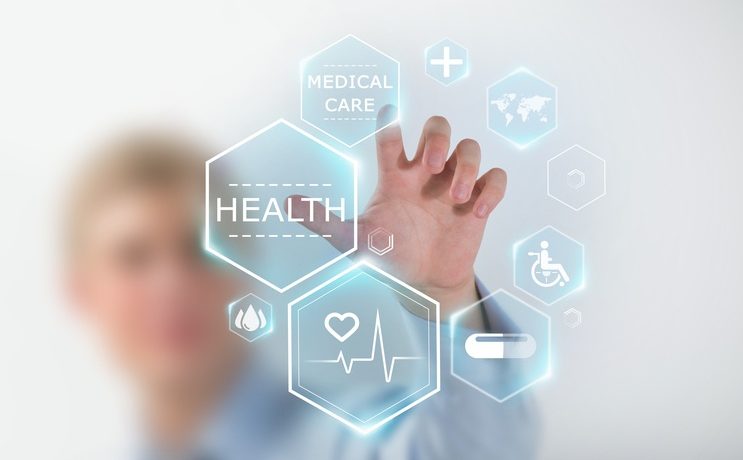

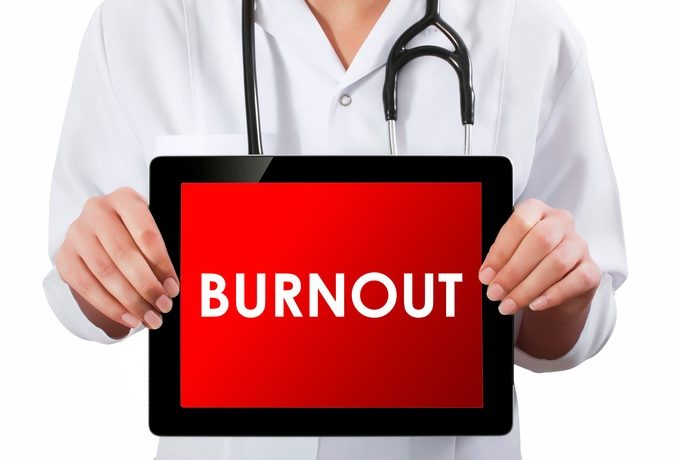
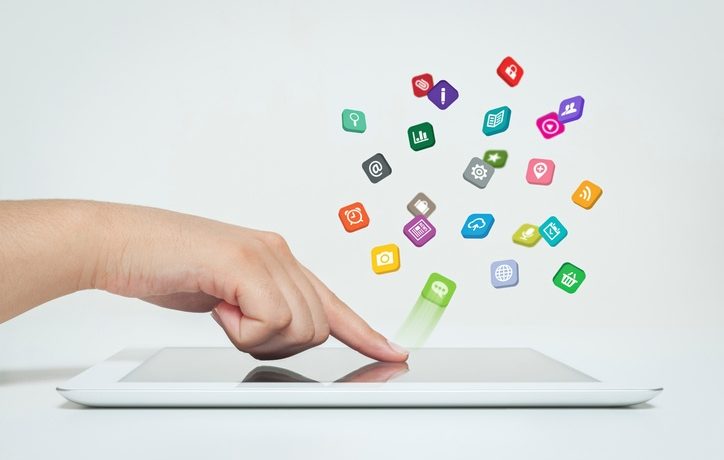



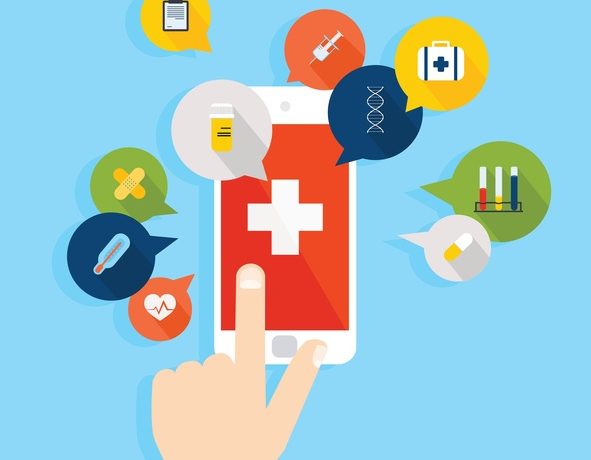



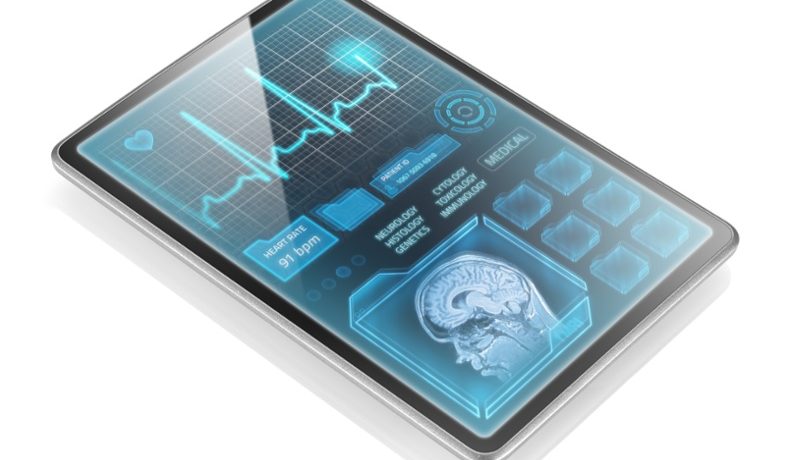


Recent Comments